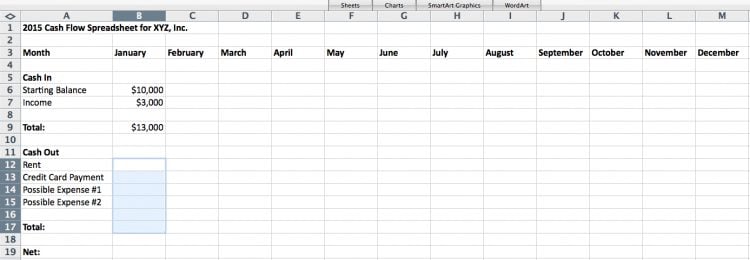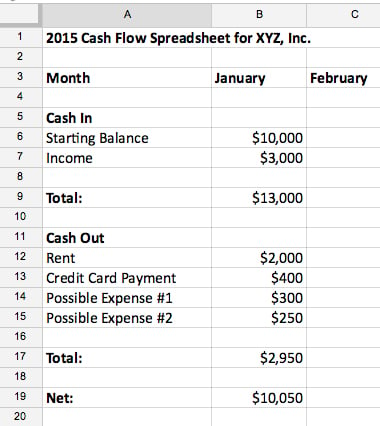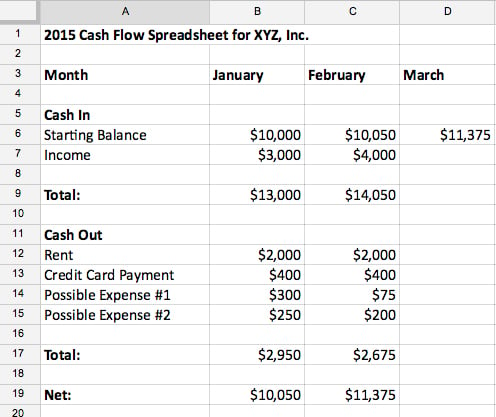How to Calculate Business Cash Flow
Tracking your cash in and cash out is an important part of running your business. Learn how to calculate the flow.
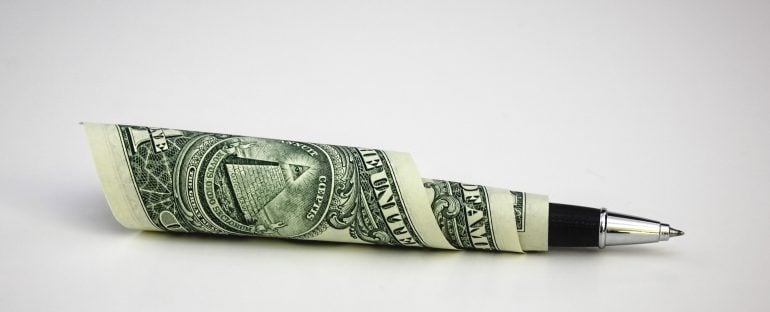
Many, or all, of the products featured on this page are from our advertising partners who compensate us when you take certain actions on our website or click to take an action on their website. However, this does not influence our evaluations. Our opinions are our own. Here is a list of our partners and here's how we make money.
Tracking your cash flow is a crucial step toward establishing a healthy small business. Unless you're a former bookkeeper, the task might seem daunting, but the actual equation is relatively simple: Cash in minus cash out.
Richard Schwartz, a registered tax return preparer and owner of Schwartz Accounting & Tax in Denver, recommends using software such as QuickBooks to stay organized. However, if you're looking for a straightforward approach to tracking your cash flow — and don’t have experience with accounting or bookkeeping — a simple spreadsheet will get the job done.
If you’re using credit cards or cash-flow loans to help stretch your capital, it's even more important to stay organized.
How to calculate business cash flow
To start, list the months of the year side by side across the top of your spreadsheet. (We made the calculations below in Microsoft Excel.) Then use the left side for a running list of your cash assets and cash expenses.
Your cash assets will include the starting balance in your bank account and monthly income, such as sales and interest. For example, say you started the year with $10,000. In January, you made $3,000. Add the two together to get a total cash balance of $13,000.
Your most regular cash expenses will probably be rent a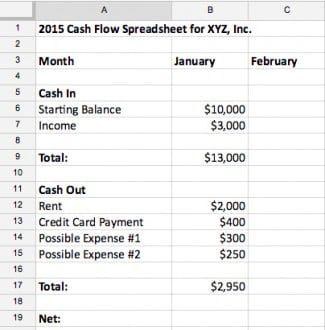
Let's say your rent is $2,000, and your monthly credit card payment is $400. You know you'll be on the hook for $2,400 each month. But maybe you had to pay back a relative who loaned you $300 to fix your computer and you opted to pay your $250 utility bill in cash. (Right now you’re only tracking your cash flow, so you don’t need to include expenses you’ve financed with a credit card). Add them together, and you have total cash expenditures of $2,950 for the month.
Now, refer back to the original equation: cash in minus cash out. Subtract your expenses from your total cash balance, and you’re left with your monthly income.
This is the balance you’ll roll over to the next month, and the number you'll use to determine how much money to stash away for taxes.
As you repeat the process each month, you’ll generate a comprehensive overview of your cash flow.
The more complex your business, the more complex your spreadsheet will be. But if you're using Excel, you can rely on some of its features — such as automatically summing your totals and rolling over the balance each month — to keep you on track.
You can also choose another spreadsheet program, or even rely on a pencil and a notebook, if that makes you feel more comfortable.
Remember, warns Schwartz, cash flow is only part of the picture. You’ll need to consider your overall liabilities, including credit card and loan balances, when determining whether you’re profitable.
The bottom line on calculating your cash flow
Cash flow is just one element of your business operations, but tracking it is an important step in ensuring your success.
You can use financing to help your cash stretch further, Schwartz says. “If you pay for everything in cash, you may run out of cash before your business has really had a chance to take off," he says.
Find and compare small-business loans
NerdWallet has come up with a list of the best small-business loans to meet your needs and goals. We gauged lender trustworthiness, market scope and user experience, among other factors, and arranged them by categories that include your revenue and how long you’ve been in business.
| Product | Starting at | Promotion | Learn more |
|---|---|---|---|
 QuickBooks Online NerdWallet Rating Learn more on QuickBooks' website | $35/month Additional pricing tiers (per month): $65, $99, $235. | 50% off for first three months or free 30-day trial. | Learn more on QuickBooks' website |
 FreshBooks NerdWallet Rating Learn more on FreshBooks' website | $21/month Additional pricing tiers (per month): $38, $65, custom. | 70% off for 4 months. 30-Day Money Back Guarantee. | Learn more on FreshBooks' website |
 Xero NerdWallet Rating Learn more on Xero's website | $20/month Additional pricing tiers (per month): $47, $80. | 90% off for 6 months. | Learn more on Xero's website |
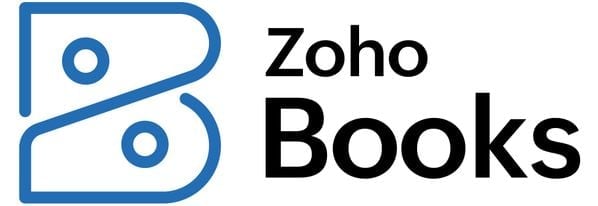 Zoho Books NerdWallet Rating Learn more on Zoho Books' website | $0 Additional pricing tiers (per month): $20, $50, $70, $150, $275. | 14-day free trial of the Premium plan. | Learn more on Zoho Books' website |


